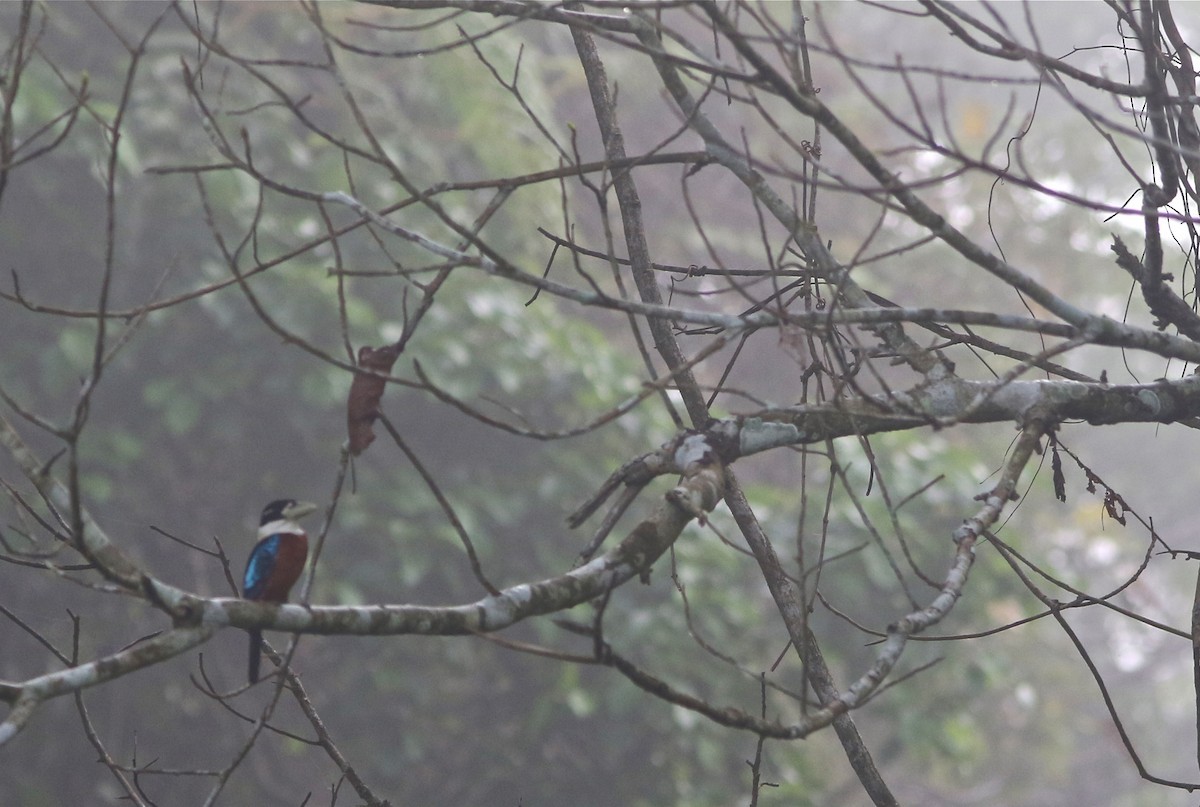Rufous-bellied Kookaburra
A species of Kookaburras Scientific name : Dacelo gaudichaud Genus : Kookaburras
Rufous-bellied Kookaburra, A species of Kookaburras
Botanical name: Dacelo gaudichaud
Genus: Kookaburras
Content
Description General Info
 Photo By Don Roberson
Photo By Don Roberson Description
The rufous-bellied kookaburra (Dacelo gaudichaud), originally known as Gaudichaud's kookaburra after the French botanist Charles Gaudichaud-Beaupré, is a species of kookaburra which is widely distributed through the forests of lowland New Guinea. It has a black cap, blue-tinged wings, and a pale rufous belly and tail feathers, but its white bill distinguishes it very clearly from other kookaburras with their black bills. Juveniles, however, have a dark grey bill. Like the blue-winged kookaburra, the sexes can be distinguished by the colour of the tail feathers: blue in males and rufous in females and immature birds. Rufous-bellied kookaburras are smaller than other kookaburra species at around 143 grams (5.0 oz) as against the laughing kookaburra's 335 grams (11.8 oz) and about 28 centimetres (11.0 in) as against the laughing kookaburra's 46 centimetres (18.1 in). Despite this major size difference, the rufous-bellied kookaburra has been known to form (infertile) hybrids with all other kookaburra species, though available genetic studies suggest it is clearly the most distant of the four. This kookaburra is unusual in that it occupies dense rainforests (as opposed to the open country preferred by other kookaburras) and does not live in cooperative breeding family groups but singly or when breeding in pairs. Rufous-bellied kookaburras can be found in the middle story of the tropical rainforest, where they fly out directly and swiftly from their perch to seize large insects from trees. Despite their direct flight, rufous-bellied kookaburras are capable of very sharp twists and turns around the dense trees that form their habitat. Rufous-bellied kookaburras have been known also to hunt small vertebrates, but do so less frequently than the larger woodland kookaburras, and frequently are mobbed by smaller birds when it preys on their eggs or nestlings. Males are very aggressive in defending their territory, which averages 2 to 2.5 hectares (4.9 to 6.2 acres) in size, and sometimes fight intruders violently. Like their larger relatives, rufous-bellied kookaburras breed in termite mounds. Breeding usually takes place from May to October, though the young do not disperse fully until February and pairs have never been known to attempt a second brood in one year. Two white eggs are laid, though the actual incubation period is not known. 
Size
31 cm
Nest Placement
Cavity
Feeding Habits
Rufous-bellied Kookaburra primarily feeds on arthropods, worms, and small vertebrates. It forages mostly in lower canopies and occasionally on the ground, where it may dig. Known for attacking birds in mist-nets, rufous-bellied Kookaburra indicates potential nest robbing, evident by mobbing from small birds.
Habitat
The rufous-bellied Kookaburra typically resides in the lower canopy of diverse forested environments, including monsoon and riverine forests, primary rainforests, and floodplain-forests. It adapts well to a range of secondary habitats such as parklands, thick coastal palm scrubs, and mangroves. The species is also comfortable in human-modified landscapes, making use of garden areas and tree stands in cleared lands, including teak and rain tree plantations. Critical to its habitation is the presence of arboreal termite nests which are essential for its breeding.
Dite type
Carnivorous
General Info
Feeding Habits
Bird food type

 Photo By Don Roberson
Photo By Don Roberson